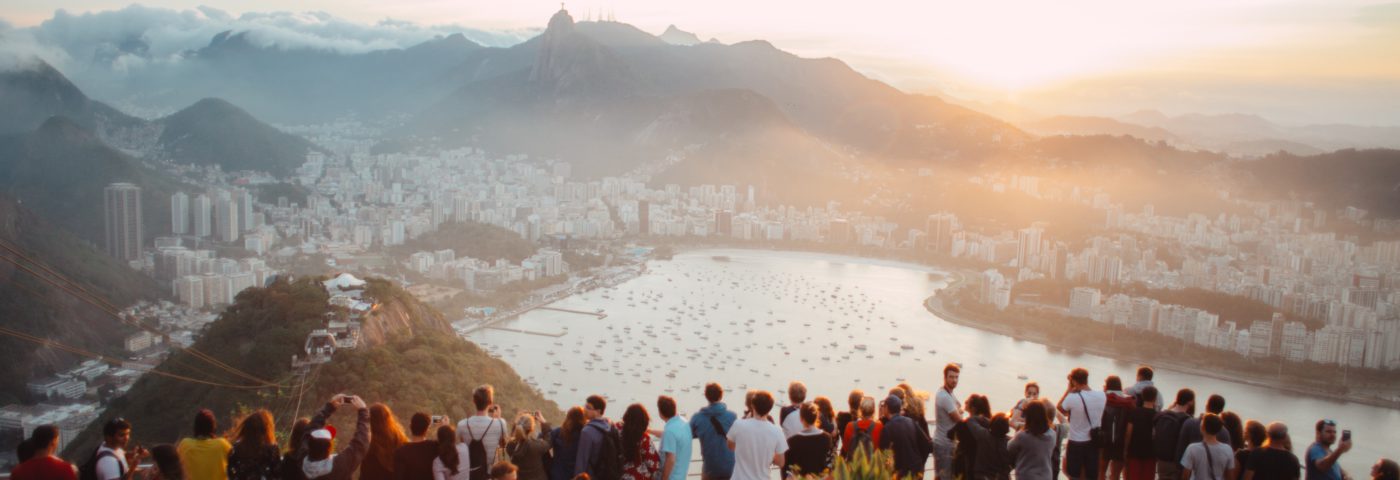‘What’s next?’ is the question everyone wants answered. Will it be the same as before, or something new?
For our industry, where much of the conversation of the last few years in tourism has focused on the issue of over-tourism, this question is especially pertinent. What comes next? What happens when the lockdowns start to lift, and the tourists are allowed to visit. Will over-tourism have magically vanished, or will it inexorably return?
Want to hear the latest responsible tourism updates? Make sure you REGISTER for WTM Virtual so you don’t miss out!
Many of the early signs are not great. In the UK and elsewhere, unseasonably warm spring weather has seen people amass on beaches and beauty spots. Cruise companies talk of a surge of bookings for next year. In China, photos of crowded tourist spots marked the first stories of the country opening back up again.
Accompanying all this have been the stories of increased resentment from local people. It’s one thing to be angry at noisy revellers disturbing your peace and quiet. But what if you fear they may be bringing a deadly disease to your community? Just as in the first phase of over-tourism, people are putting up signs telling visitors to stay away.
We do however need to be careful about reading too much into any of these early signals. We know this is a temporary phase, and we do not know what comes next. It is too easy to interpret signs to fit the future you want to see. An increase in birdsong during lockdown does not mean we will all become nature lovers. A surfeit of webinars does not spell the end of business travel. Nothing is settled.
Because nothing is settled, however, everything is possible. We don’t know the future, but we can explore what questions need asking, and what we need to do to get the answers we want.
- Will concerns over health see a drop in the volumes of coach tours, but a surge in people travelling by car?
- Will restaurants look to occupy more outside space in order to serve the same numbers of people while observing social distancing? How will this impact public space?
- Or if capacity is reduced – in museums, restaurants, markets etc – does that mean that it becomes quicker to fill, and thus a sense of overcrowding can be created with less people?
- If destinations and businesses impose far tighter controls on numbers, for example through limiting the number of tickets available and making advance booking mandatory (as has happened with the French railways), how will this be managed to ensure locals aren’t priced out of their own facilities?
- Will people fear staying in short-term rentals due to hygiene concerns, or will protocols and certifications be established that assuage these worries? How will this affect the residents living nearby?
- Might some tourists prefer the lack of close contact with multiple strangers that short-term rentals offer compared to a hotel, where guests could be coming from all over the world?
- Will remote, uncrowded, rural destinations be most attractive for those seeking the safety of isolation, and at what point do they become ‘overcrowded’?
- Will destinations that have avoided the worst of COVID-19 seek to market themselves as ‘safe’, even if attracting tourists increases the risk of no longer being ‘safe’? How will local people perceive the tourism industry and visitors in such a situation?
I don’t see that it is possible to know the answers to questions like these yet, during this lockdown phase. What is possible is to decide as a host community which answers you would like to see, and explore what you might do to try to achieve them.
In one of my early blogs during this crisis I wrote about how – in the absence of visitors – local DMOs were rethinking themselves to serve local people’s needs, repositioning their websites as information portals for residents. I hoped that this would mean “a different relationship being created between the DMO and the community in which it is based.” Now surely is the time to develop this new relationship, to work out, as a host community, with all your stakeholders, what tourism you want to see next.
Photo by Elizeu Dias on Unsplash
You may also be interested in…
- Does Coronavirus have any lessons for sustainable tourism?
- How can we ensure tourism’s recovery benefits those that most need it?
- A future template for resilience? How we can repurpose tourism and support local communities


